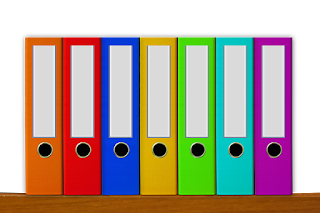Thing 6: Reflective Practice on Things 3, 4 & 5 - Visual Communicator
 |
| Pixabay, Bess-Hamati |
Reflective practice is the ability to reflect on one's actions so as to engage in a process of continuous learning. (Schon, 1983) By reflecting on the task, it gives you insight into your approach to each task and also allows you to develop insight and in turn a deeper understanding of learning. I suppose adding an element of reflection reinforces what we have learnt while doing the task. We were recommended to use the Gibb's model of reflection which has six stages which help to structure the reflection of the learning process:
I regularly use social media and even had a blog in my younger days so this course didn't phase me. I think social media is constantly evolving and new tools are emerging so it was fun to discover that there were many tools I wasn't aware of so far in my RUDAI23 journey.
Thing 3 introduced us to Image Banks. I tried Pixabay which was full of professional-looking, copyright-free photos offering lots of variety and a useful search tool. I found it easy to use and will definitely use it again. For the final results and to see the image I choose, go to Thing 3 - Image Banks.
Thing 4 was all about communicating visually and introducing some of the available tools to do this. I downloaded the PhotoFunia app on my phone. I enjoyed trying the different categories and finding one to suit my needs. Again it was easy to use and gives some interesting and innovative ideas that will be useful for marketing or presentations. It adds the element of fun. To see the image I created, check out Thing 4 - Communicating Visually.
Thing 5 introduced us to video presentations. I downloaded the Screen-O-Matic software. Another useful free piece of software that is very easy to use. I was very impressed with this and can see many ways to incorporate this into online quick tutorials for users especially as most of our users are offsite. This is very handy for teaching users how to use our resources more effectively in bite-sized pieces. I created a short video tutorial on how to access our online journals, see Thing 5 - Video Presentations. I was happy with the finished product but feel it could do with a voiceover element to explain to the user what is happening on screen. I also played around with Powtoon but feel this requires a little more effort to put together a finished product. I will definitely check this out in the future. I loved the animation and feel it could be useful for creating a fun and interesting video presentation once I had more time to play around with it.
All in all, I loved learning about the new tools and playing around with them. Unfortunately as with everything the time element played a huge factor and I tended to go with the quickest and easiest tools to master. These were also the ones that appealed to me. I also found that I tried to see how the tool would fit in with our needs. For example, I found in order to get the best out of the tool and to provide me with a purpose, I had to create something that has the potential to be used in the library. i.e. marketing the new library webinars. I will most definitely be utilising these tools in the future and hope to explore the other ones mentioned when I have more time. So far, I am enjoying the course and feel it is adding to my knowledge of free online tools that will be of benefit for the future. I look forward to learning more.


Glad you've been finding the course useful! Thanks so much for following along, trying out these tools, and telling us about it!
ReplyDelete